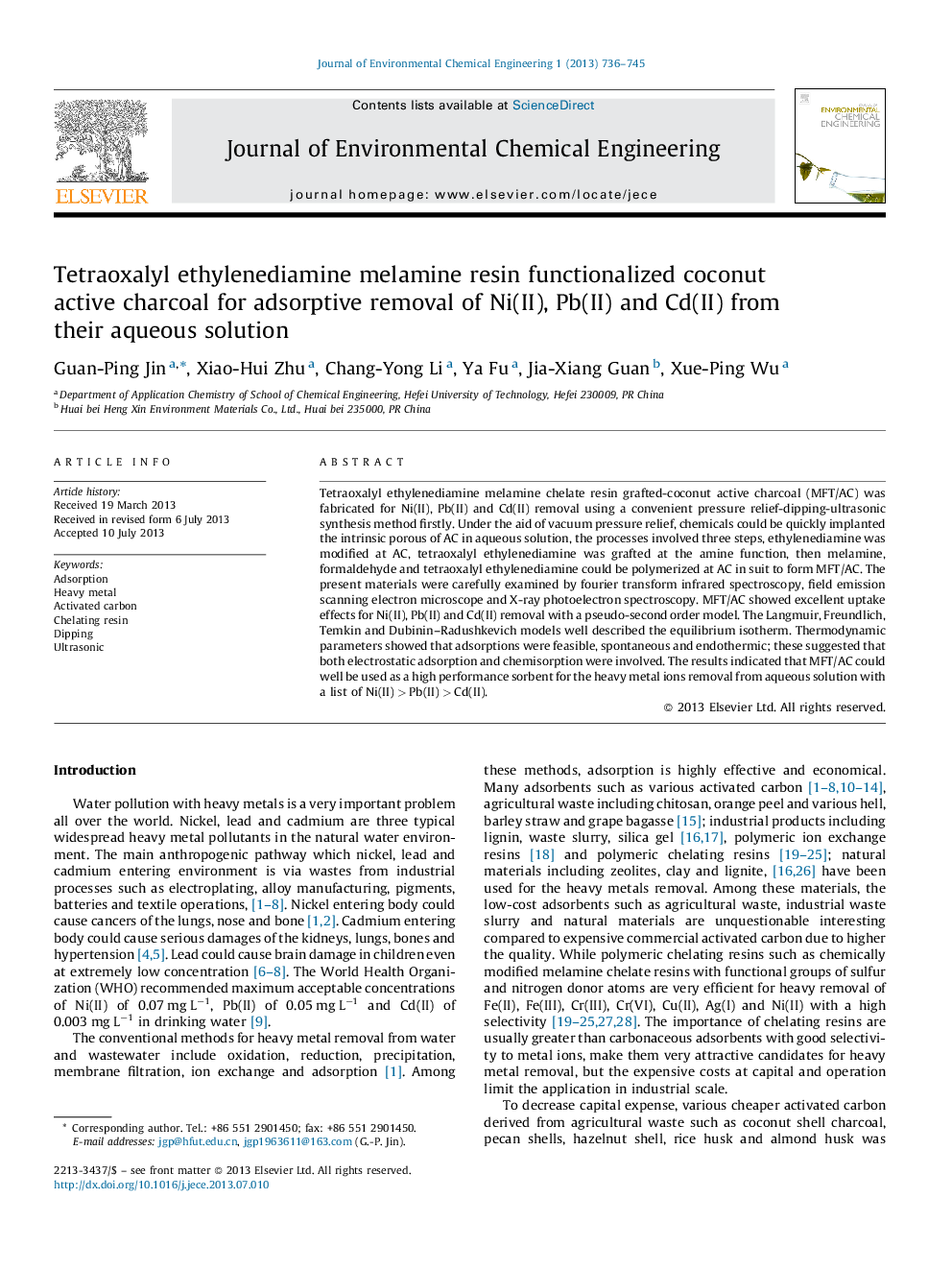| Article ID | Journal | Published Year | Pages | File Type |
|---|---|---|---|---|
| 222461 | Journal of Environmental Chemical Engineering | 2013 | 10 Pages |
•Powder tetraoxalyl ethylenediamine melamine resin is inconvenient and expensive in heavy metal removal processes.•Uptake capacity and selectivity of coconut active charcoal is weak compared to the chelate resin.•Tetraoxalyl ethylenediamine melamine resin grafted – active carbon.•Adsorptive removal of Ni(II), Pb(II) and Cd(II) from their aqueous solution.
Tetraoxalyl ethylenediamine melamine chelate resin grafted-coconut active charcoal (MFT/AC) was fabricated for Ni(II), Pb(II) and Cd(II) removal using a convenient pressure relief-dipping-ultrasonic synthesis method firstly. Under the aid of vacuum pressure relief, chemicals could be quickly implanted the intrinsic porous of AC in aqueous solution, the processes involved three steps, ethylenediamine was modified at AC, tetraoxalyl ethylenediamine was grafted at the amine function, then melamine, formaldehyde and tetraoxalyl ethylenediamine could be polymerized at AC in suit to form MFT/AC. The present materials were carefully examined by fourier transform infrared spectroscopy, field emission scanning electron microscope and X-ray photoelectron spectroscopy. MFT/AC showed excellent uptake effects for Ni(II), Pb(II) and Cd(II) removal with a pseudo-second order model. The Langmuir, Freundlich, Temkin and Dubinin–Radushkevich models well described the equilibrium isotherm. Thermodynamic parameters showed that adsorptions were feasible, spontaneous and endothermic; these suggested that both electrostatic adsorption and chemisorption were involved. The results indicated that MFT/AC could well be used as a high performance sorbent for the heavy metal ions removal from aqueous solution with a list of Ni(II) > Pb(II) > Cd(II).
Graphical abstractFigure optionsDownload full-size imageDownload as PowerPoint slide
